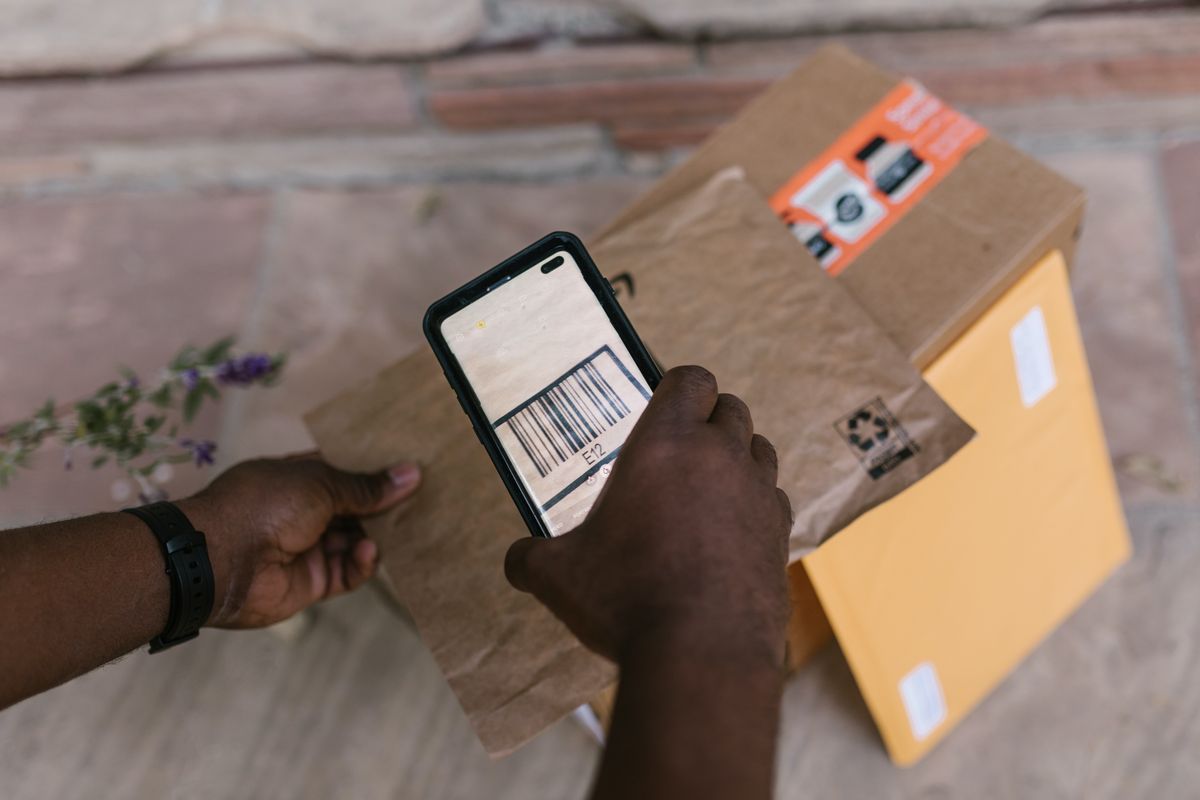Exploring Barcodes: Their Creation and Application in Business

Barcodes have become ubiquitous, adorning everything from grocery items to hospital wristbands. Since their invention in 1949, they have played a transformative role in the world of business. Surprisingly, however, many business owners have yet to fully harness their potential.
About 79% of small business proprietors lack sufficient knowledge about barcodes to incorporate them into their operations. This aligns with data from major search engines, where over 20 million barcode-related searches are conducted on Google annually.
At Altro Labels, we firmly believe that every small business owner should have access to the tools required to bolster their ventures. In this article, our goal is to provide that understanding and empower modernl business proprietors to enhance efficiency and embrace the advantages of barcoding their products and inventory.
The Significance of Barcodes in Business
Let's delve into the most compelling reasons to implement barcodes in your product and inventory management:
Reduced Error Risk
Manually inputting alphanumeric data into a computer system introduces a high risk of inaccuracies. Whether it's ringing up a customer, tracking a package, or managing inventory, manual data entry leaves room for keyboard errors. On average, humans make one error per 300 characters when entering data manually. In contrast, barcode scanners have an error rate of only one error per 36 trillion characters. Can your business afford to take chances with manual data entry?
Time Savings
Data entry is a time-consuming process. Consider the contrast between the speed of human thought and computer processing. While the time difference may seem negligible for small batches, it accumulates over hours or pay periods, wasting valuable time that could be put to more productive use. This also matters to your customers, as manual product entry at checkout consumes their time. Is their time not worth the investment?
Lower Operational Costs
The widespread adoption of barcodes has driven down the costs of the necessary equipment, making the one-time upfront investment more cost-effective than continually paying staff to perform the same tasks week after week. This cost-effectiveness extends to your overhead expenses, allowing you to reevaluate and potentially reduce unnecessary expenditures, such as overestimated warehouse space costs.
Overall Expense Reduction
Enhanced accuracy in data management can lead to cost savings. For instance, if you are paying for warehouse space, overestimating your inventory can result in unnecessary expenses. Accurate data ensures you pay for exactly what you need.
Simplified Pricing Updates
Updating product pricing can be labor-intensive when items have price tags affixed to them. Instead, display prices on product shelving or as signage and employ barcodes on the actual products. This method significantly reduces the workload when prices change. Instead of replacing individual price tags, you only need to update the shelf signage and the barcode database.
Assessing Your Business's Readiness for Barcodes
While barcodes are not mandatory unless you are selling in major retail markets like Walmart and Target, they can provide significant benefits for your business if:
You run a product-based business
You manage substantial inventory
You require more accurate inventory counts
You operate multiple retail or storage locations
You need to track moving parts
You collaborate with various vendors
You anticipate business growth
You have multiple employees
You aim to expedite customer checkout processes
You wish to project a more professional image
Steps to Implement Barcodes
Integrating barcodes into your business can be a relatively straightforward and affordable process. Here are the key components you will need:
Naming Convention
Develop a system of product codes or SKUs (Stock Keeping Units) that concisely describe each of your products. This convention simplifies product identification and data management.
Barcode Generator
Create your barcodes using online generators, which are user-friendly and efficient. You input your code, and the generator produces a downloadable barcode image for printing.
Barcoding Software
Invest in software that interprets your product codes and integrates them into your system for efficient inventory management. Microsoft Excel may be suitable for cataloging, but specialized software is better for tasks like inventory management.
Barcode Scanners
Hardware is essential for reading barcodes and communicating with your software. Fortunately, barcode scanners are affordable and readily available.
Types of Barcodes
There are several popular barcode types, each serving different purposes and systems worldwide. The choice of barcode type depends on your specific use case. Here's an overview of some common types:
UPC-A and UPC-E: These are used in countries like the US, Canada, UK, and Australia. UPC-A contains 12 numbers, while UPC-E is a condensed version with 6 numbers.
EAN-13 and EAN-8: Commonly used in Europe, Asia, Africa, and Latin America. EAN-13 has 13 numbers, while EAN-8 is a shorter version with 8 numbers.
Code 39: Suitable for internal inventory management and small-scale point-of-sale systems. It can include numbers, uppercase letters, spaces, and specific symbols.
Code 128: Offers a broader range of characters, including upper and lowercase letters, punctuation, numbers, and various symbols.
Codabar: Predominantly used in logistics-based operations like libraries, shipping companies, and blood banks. It utilizes numbers, letters A-D, and specific symbols.
Interleaved 2 of 5 (ITF): Comprises numbers only and requires an even number of digits. Commonly seen on corrugated boxes containing packaged products.
Postnet: Recognizable as long barcoded strips on mail delivered through the US Postal Service. They encode ZIP code information for mail sorting.
QR Codes: Unlike traditional barcodes, QR codes are 2-dimensional and can store significantly more data. They are often used for customer-facing information, such as contact details, text, and web addresses.
Creating Barcodes
Creating barcodes involves a straightforward process that includes determining the type of barcode you need, generating the barcode graphic, and incorporating it into your products or documents. Here are the general steps to create barcodes:
Determine the Type of Barcode
Identify the specific type of barcode you need based on your requirements. Common barcode types include UPC, EAN, Code 39, Code 128, and QR codes. The choice depends on factors such as your industry, use case, and the information you want to encode.
Assign Unique Identifiers (If Required)
If you're creating barcodes for retail products, you may need to obtain a unique identifier (e.g., UPC or EAN) from a barcode provider like GS1. These identifiers are essential for global product identification and are associated with your company.
Consider Design Elements (Optional):
While the main purpose of a barcode is to encode data for scanning, you can customize its appearance to some extent. Ensure there's a high contrast between the barcode and the background, and be mindful of size restrictions, especially for UPC and EAN barcodes.
Test Scanning (Again)
After incorporating the barcode, conduct another round of testing to ensure that the barcode can be successfully scanned in real-world situations. This step is crucial to confirm that the barcode will work as intended.
Maintain Barcode Records
Keep a record of the barcodes you've created, the associated data, and their applications. This record can be helpful for tracking and managing products or assets.
Implement Barcode Scanners (If Necessary):
In conclusion, barcodes are a valuable tool for businesses of all sizes, offering enhanced accuracy, time savings, and cost-effectiveness. By understanding the process of creating and using barcodes, business owners can streamline their operations, improve efficiency, and compete more effectively in today's competitive market.
Enhancing Custom Product Labels with VDP and QR Codes
Custom product labels often feature various types of barcodes to streamline inventory management and enhance customer engagement. Among these, Variable Data Printing (VDP) and QR codes have gained significant popularity. VDP allows for the creation of personalized labels with unique information on each label, such as serial numbers, batch codes, or expiration dates. This feature is invaluable for industries like pharmaceuticals and electronics, where precise tracking is crucial. QR codes, on the other hand, offer an interactive dimension to product labels. When scanned with a smartphone, they can redirect customers to websites, provide detailed product information, or even initiate a direct purchase. These barcodes not only provide essential data but also enhance the overall aesthetic of custom labels, offering both functionality and visual appeal.
Incorporating these barcodes into custom product labels is a seamless process. VDP and QR codes can be integrated into label designs during the printing process, allowing for flexibility and customization. They are often strategically placed on labels to ensure ease of scanning and aesthetic harmony. Additionally, their digital nature makes it convenient to update and modify information as needed, reducing the need for entirely new label designs. Custom product labels with these barcodes are a prime example of how technology and design converge to improve both the efficiency of businesses and the experience of consumers.
Creating barcodes can be a significant undertaking, but it need not be a complex one. We trust that these frequently asked questions and their corresponding responses will bolster your confidence as you embark on the journey of generating, printing, and implementing your barcodes. If you have inquiries tailored to your specific circumstances, please do not hesitate to reach out to our customer service team at Altro Labels via email at info@altrolabels.com
